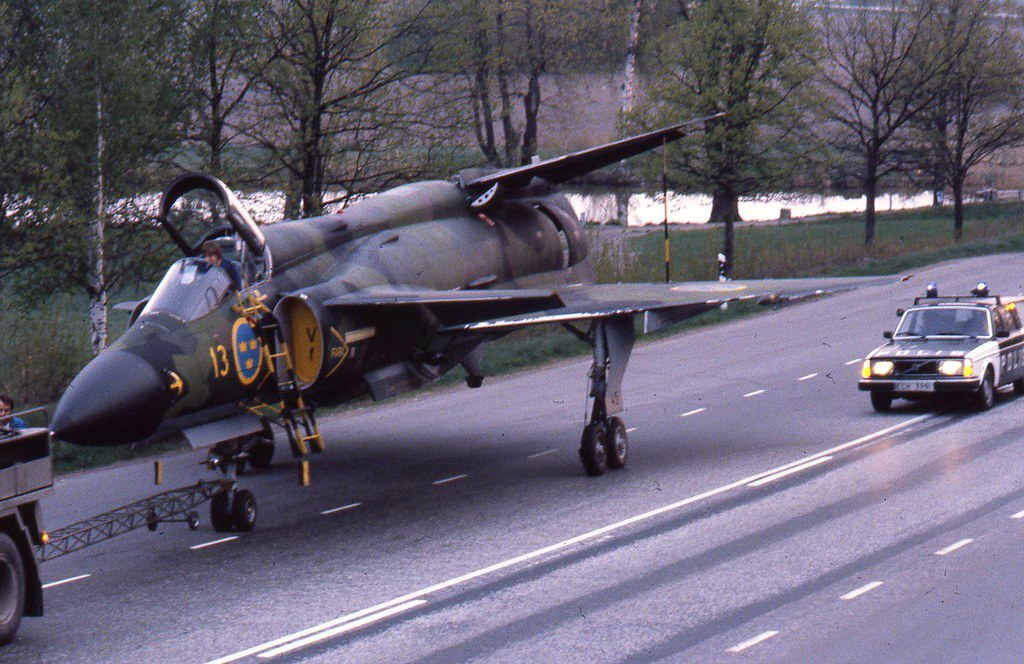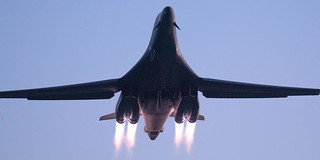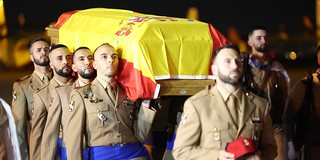Dispersed operations, the advantage of the Swedish Gripen against an attack on its bases
On June 5, 1967, at the beginning of the so-called Six-Day War, something happened from which not many countries have learned lessons.
The Egyptian Air Force disaster in 1967
On the morning of that day and in three waves, the Israeli Air Force launched a devastating attack on the bases of the Egyptian Air Force, catching it off guard and with its planes on the ground. Together with the Japanese attack on Pearl Harbor on December 7, 1941, that Israeli operation was one of the most devastating air attacks in military history: in just a few hours, Israel destroyed 13 bases air, 23 radars and 286 of Egypt's 420 combat aircraft.

Dispersed operations: deploying fighters on roads
To avoid situations similar to the one suffered by Egypt in 1967, dispersed operations were created, which consist of operating planes from improvised runways on stretches of roads. Germany was one of the pioneers in this type of operations during World War II. During the Cold War, West Germany continued training in this type of operations, along with US combat aircraft based in that country. In addition, other nations such as Bulgaria, Czechoslovakia, Finland, Poland, Sweden, Switzerland and the USSR also prepared for such operations during the Cold War. The United Kingdom based its dispersal strategy on the use of Harrier fighters, with short takeoff and vertical landing (STOVL) capability.

Currently, Germany maintains 11 active highway sections as auxiliary landing strips in the event of war. The Russian invasion of Ukraine highlighted the need for these dispersed operations, after the Russian Air Force left the Ukrainian Air Force badly damaged with its air offensive on February 24, 2022. As we saw in September, The Polish Air Force has once again trained in this type of operations after 20 years without practicing them.

Sweden's extensive experience in dispersed operations
Although Finland has been training in the use of its F/A-18 Hornet fighters on roads for years, surely the European country best prepared for this type of operations is Sweden. Already during the Second World War, that Nordic country began the construction of several "Berghangars" (rock hangars), located under mountains. In the 1950s, Sweden launched the Flygbassystem 60 program (also known as Bas 60), which consisted of creating 70 small air bases throughout the country to operate its fighters on roads, facing to a possible Soviet attack.

In the 1970s, Sweden began designing the Flygbassystem 90 (Bas 90) program, which began to be implemented in the 1980s. This new plan planned to operate aircraft on 200 runways in different parts of the country, including many stretches of highways. The big difference between Sweden and many other countries is that its aeronautical industry, Saab, also focused on that objective. If the Saab 35 Draken (1955) needed a runway of 1,200 meters to take off, the Saab 37 Viggen (1967) could take off on runways of only 500 meters. To give us an idea, the contemporary American fighter of the Viggen, the F-4 Phantom II, needed 1,400 meters to take off.

Sweden designs its fighters for these operations: the case of the Gripen
The design of the Swedish fighters not only focused on allowing them to take off on shorter and less prepared runways, but also on greater ease of maintenance, as well as a lower need for specialized personnel and shorter times. shorter refueling times. These objectives gave rise to the current Swedish fighter, the Saab JAS-39 Gripen, which can take off in just 400 meters, land on runways of 500 meters and, in addition, can be rearmed and resupplied of fuel for a new takeoff just 10 minutes after landing, a task that only requires one specialized technician and five conscripted mechanics.

These characteristics of its air force and its fighters mean that Sweden is today the best prepared European country in the event of a Russian air attack, with Gripen fighters that can operate from small, austere and dispersed air bases throughout the country, and which can also land and take off from highways if necessary, taking advantage of the civil road network for that purpose.

The US and NATO learn from the Swedish experience in these operations
Sweden's dominance in dispersed operations is such that in 2022 the US Air Force (USAF) showed its interest in learning from the Swedish experience: "The ability to disperse aircraft is a speciality of theirs," said General James B. Hecker, commander of the USAF in Europe, about the Force Swedish Air Force, adding: "Sweden has got Agile Combat Employment (ACE) down better than any other air force in the world, and we are going to exploit that. It's very exciting!"

In December 2023, NATO Allied Air Command (AIRCOM) organized a symposium on Agile Combat Employment (ACE). During that meeting, Brigadier General Gilles Juventin of the French Air Force said: "As one of AIRCOM’s five priorities contributing to NATO Air Power, we are establishing an operational concept to ensure Allies will regain their agility and interoperability in how aircraft are maintained, supported and operated under the full spectrum of joint operations. This also means it must be trained and exercised during peacetime."

Juventin added: "Several NATO Allies and Partners have already conducted ACE deployments and exercises. All Allies should now embrace ACE and make it part of the fabric of national education, training, planning, operations and future investment – this was one of the main topics during the symposium."
On this issue, in addition to the experience that Germany, Finland and Poland already have in dispersed operations, two NATO countries, Hungary and the Czech Republic, will have the same advantage as Sweden by being Gripen operators strong>. Both the Czech Air Force and the Hungarian Air Force operate 12 single-seat JAS-39C and 2 two-seat JAS-39D each, all of which are leased to Sweden. In turn, the Swedish Air Force currently operates 74 JAS-39C, 24 JAS-39D and 3 JAS-39E, the most recent model of the Gripen, which is in the process of introduction. Today Saab has published an interesting video about the Gripen explaining its advantages in dispersed operations (the video is in Swedish, you can activate the automatic English subtitles in the bottom bar of the player):
---
Main photo: A Saab JAS-39E Gripen fighter of the Swedish Air Force.
|
Don't miss the news and content that interest you. Receive the free daily newsletter in your email: |
- Most read
- The brutal 'touch and go' of a Lufthansa Boeing 747 at Los Angeles Airport
- A Spanish pilot shows one of the C-295M of the 353 Special Operations Squadron
- Eurofighter vs F-35: the opinions of professional pilots on these advanced fighters
- An American airman used a Flag of Spain to direct a B-1B Lancer bomber
- The firearms used by the Pontifical Swiss Guard, the smallest army in the world
- The massive takeoff of more than half of the United States B-2 Spirit stealth bombers
- The deployment of Spanish soldiers of the Regulars and BRILAT near Russian territory

 ES
ES







Opina sobre esta entrada: